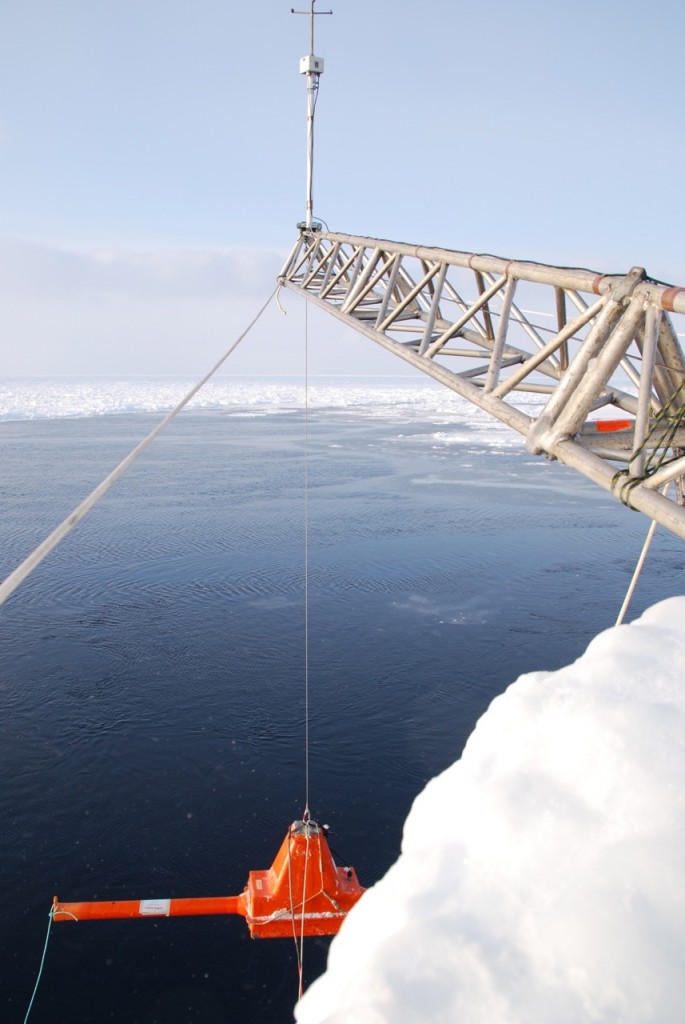The storm continues for another full day with even higher winds peaking at force 11 and scattered snow showers. However, the captain wants the ice to be removed from the fore ship. So the crew and scientists spent most of the morning hacking ice.
In the afternoon, some of the meteorological instruments are re-installed and the communication lines with the project team back in Germany running the computer simulations are established. By the end of the day, we have an optimised shipping route calculated from the numerical ice model and the ship’s key performing characteristics.
We are heading northeast … the validation part of cruise begins!
Weather conditions are constantly improving and the scientists on board start collecting data and verifying the routing system in 6-hour shifts 24 hours a day.
To complement the visual observations from the bridge, the teams from AWI and HSVA install the electromagnetic induction sensor, EM 31, in front of the ship’s bow. This provides estimates of sea-ice thickness twice a second.
With almost unlimited visibility during the second half of the day we also managed to perform the first helicopter flights.
Flying in this environment is dangerous and the pilots have to avoid open leads in the ice where fog in the line of sight can form within minutes. Unfortunately, they cannot under fly CryoSat on this day because this would bring them into Russian air space.
However, just before dusk the crew returns with the first set of measurements from airborne sensor EM-bird. Tomorrow is supposed to be another beautiful day for flying. The closest CryoSat overpasses will be further west.
Post from Matthias Drusch (ESA), 20 March 2014











Discussion: no comments